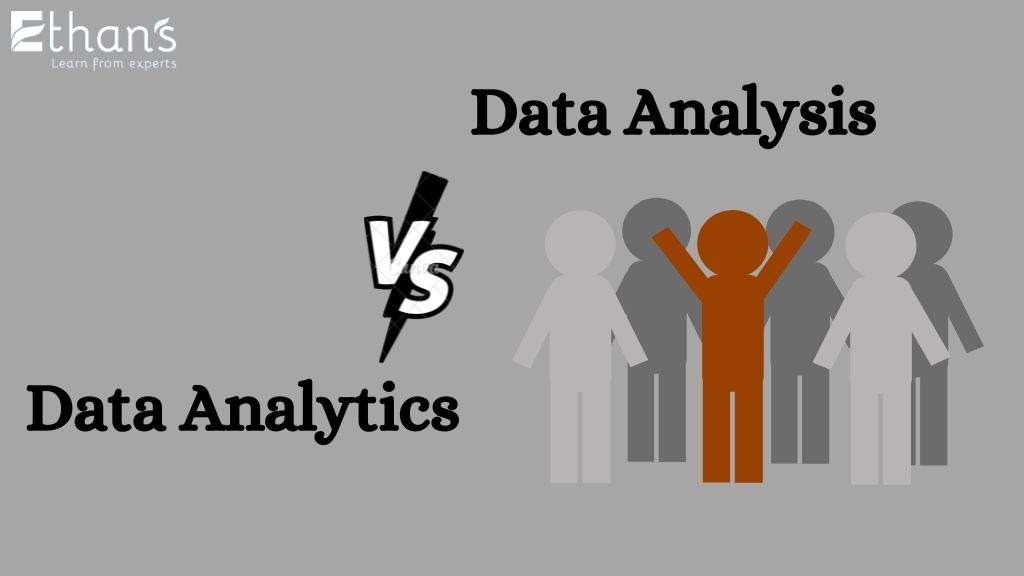In today’s data-driven world, organizations are constantly seeking insights to make informed decisions and gain a competitive edge. Data analytics and data analysis are two terms that are often used interchangeably, but they have distinct meanings and purposes. This article aims to clarify the differences between data analytics and data analysis, highlighting their unique characteristics and applications.
Definition and Scope
Data analysis involves examining, cleaning, transforming, and modeling data to discover useful information, draw conclusions, and support decision-making. It focuses on extracting insights and patterns from raw data to understand trends, relationships, and correlations. On the other hand, data analytics is a broader field that encompasses the entire process of collecting, organizing, interpreting, and communicating data to drive business strategies and actions.
Key Objectives
The primary objective of data analysis is to uncover meaningful patterns, identify outliers, and gain a deep understanding of the data. It aims to answer specific questions and solve defined problems using statistical and mathematical techniques. Data analytics, on the other hand, focuses on extracting actionable insights from data to guide strategic decision-making, optimize processes, and improve overall business performance.
Methodologies and Techniques
Data analysis employs various methodologies and techniques, including statistical analysis, data mining, predictive modeling, and exploratory data analysis. It relies on statistical tools and software to analyze data sets and generate descriptive and inferential statistics. Data analytics encompasses a wider range of methodologies, including descriptive analytics, diagnostic analytics, predictive analytics, and prescriptive analytics. It utilizes advanced algorithms and machine learning techniques to analyze complex data sets and make data-driven predictions and recommendations.
Tools and Technologies
Both data analysis and data analytics utilize a combination of tools and technologies to process and analyze data effectively. Common tools for data analysis include spreadsheet software like Microsoft Excel, statistical software such as R and SAS, and programming languages like Python. Data analytics, on the other hand, leverages a broader range of tools, including business intelligence platforms, data visualization software, big data frameworks like Hadoop, and cloud-based analytics solutions.
Skill Requirements
Professionals in data analysis typically possess strong statistical and mathematical skills. They are proficient in programming languages and have a deep understanding of statistical techniques and models. Data analysts are skilled in data cleaning, data manipulation, and data visualization. In contrast, data analytics professionals require a broader skill set. They need a solid foundation in statistics and programming but also need business acumen and communication skills to translate complex data insights into actionable recommendations for business stakeholders.
Applications and Industries
Data analysis finds applications in various fields, including finance, marketing, healthcare, and social sciences. It is used to detect fraud, conduct market research, perform risk assessments, and analyze survey data. Data analytics, with its focus on strategic decision-making, is widely used in industries such as e-commerce, supply chain management, customer relationship management, and cybersecurity. It helps businesses optimize their operations, personalize customer experiences, forecast demand, and enhance security measures.
Data Analytics and Data Analysis in Business
In a business context, data analysis is often employed to gain insights into historical data and understand past performance. It enables businesses to evaluate the effectiveness of marketing campaigns, assess customer satisfaction, and identify areas for improvement. Data analytics, on the other hand, enables organizations to take a proactive approach by leveraging real-time and predictive analytics. It helps businesses anticipate trends, detect anomalies, and make data-driven decisions to stay competitive in dynamic markets.
Challenges and Limitations
Both data analysis and data analytics face certain challenges and limitations. Data analysis can be time-consuming, especially when dealing with large data sets. It requires expertise in statistical analysis and may be limited by the quality and availability of data. Data analytics, while powerful, relies on accurate and relevant data to generate meaningful insights. Organizations need to invest in data governance and ensure data quality to derive accurate and actionable insights.
Future Trends
The field of data analytics and data analysis is evolving rapidly, driven by advancements in technology and the increasing availability of data. Future trends include the integration of artificial intelligence and machine learning algorithms into data analytics processes, the rise of real-time analytics for instant decision-making, and the growing importance of data privacy and ethics in data-driven practices.
Conclusion
In conclusion, while data analytics and data analysis are related disciplines, they have distinct characteristics and objectives. Data analysis focuses on examining and interpreting data to uncover patterns and insights, while data analytics encompasses the entire process of data collection, analysis, and strategic decision-making. Both fields are essential for organizations to harness the power of data and gain a competitive advantage in today’s fast-paced business environment.




